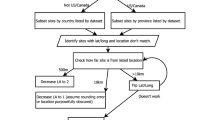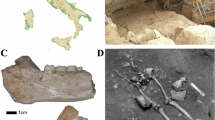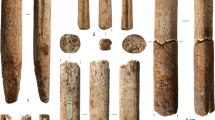Abstract
IN his report on radiocarbon evidence of the age of the Irish Sea Glaciation in the Vale of Clwyd1, Rowlands expressed surprise that the radiocarbon dating of a mammoth carpal from deposits in Ffynnon Beuno cave containing “Aurignacian and Proto-Solutrean artefacts” was only 18,000±1,400−1,200 yr BP (Birm.−146); because, on the basis of comparison with the radiocarbon ages of such industries in France, the dating was expected to be 10,000 yr older. I believe that he will be reassured to hear that a fossil bone found in the same archaeological context at another Welsh site proved to be of almost identical antiquity. In 1968, the radiocarbon age of collagen extracted from the skeleton of Paviland Man, preserved in the University Museum, Oxford, was measured by Richard Burleigh in the British Museum Research Laboratory, and the result he obtained was: 18,460±340 yr BP (BM−374). In reporting this date of the “Red Lady of Paviland”2 I pointed out that the records of excavation at the site (Goat's Hole) showed that the human skeleton was associated with remains of mammoth and with Upper Palaeolithic artefacts including types identified by D. A. E. Garrod as Final Aurignacian and Proto-Solutrean. Some archaeologists were surprised that the Paviland dating was not higher, but I was sufficiently sure of its reliability to infer provisionally that in South-West Britain, Proto-Solutrean points and Aurignacoid artefacts were being made long after they had been superseded in France. In the forthcoming Catalogue of Fossil Hominids, Part 2 (Europe), I have therefore indicated the cultural horizon of Paviland Man as late Proto-Solutrean.
This is a preview of subscription content, access via your institution
Access options
Subscribe to this journal
Receive 51 print issues and online access
$199.00 per year
only $3.90 per issue
Buy this article
- Purchase on SpringerLink
- Instant access to full article PDF
Prices may be subject to local taxes which are calculated during checkout
Similar content being viewed by others
References
Rowlands, B. M., Nature Physical Science, 230, 9 (1971).
Oakley, K. P., Antiquity, 42, 306 (1968).
Author information
Authors and Affiliations
Rights and permissions
About this article
Cite this article
OAKLEY, K. Biological Sciences: Radiocarbon Dating of Proto-Solutrean in Wales. Nature 231, 112 (1971). https://doi.org/10.1038/231112a0
Received:
Issue date:
DOI: https://doi.org/10.1038/231112a0



